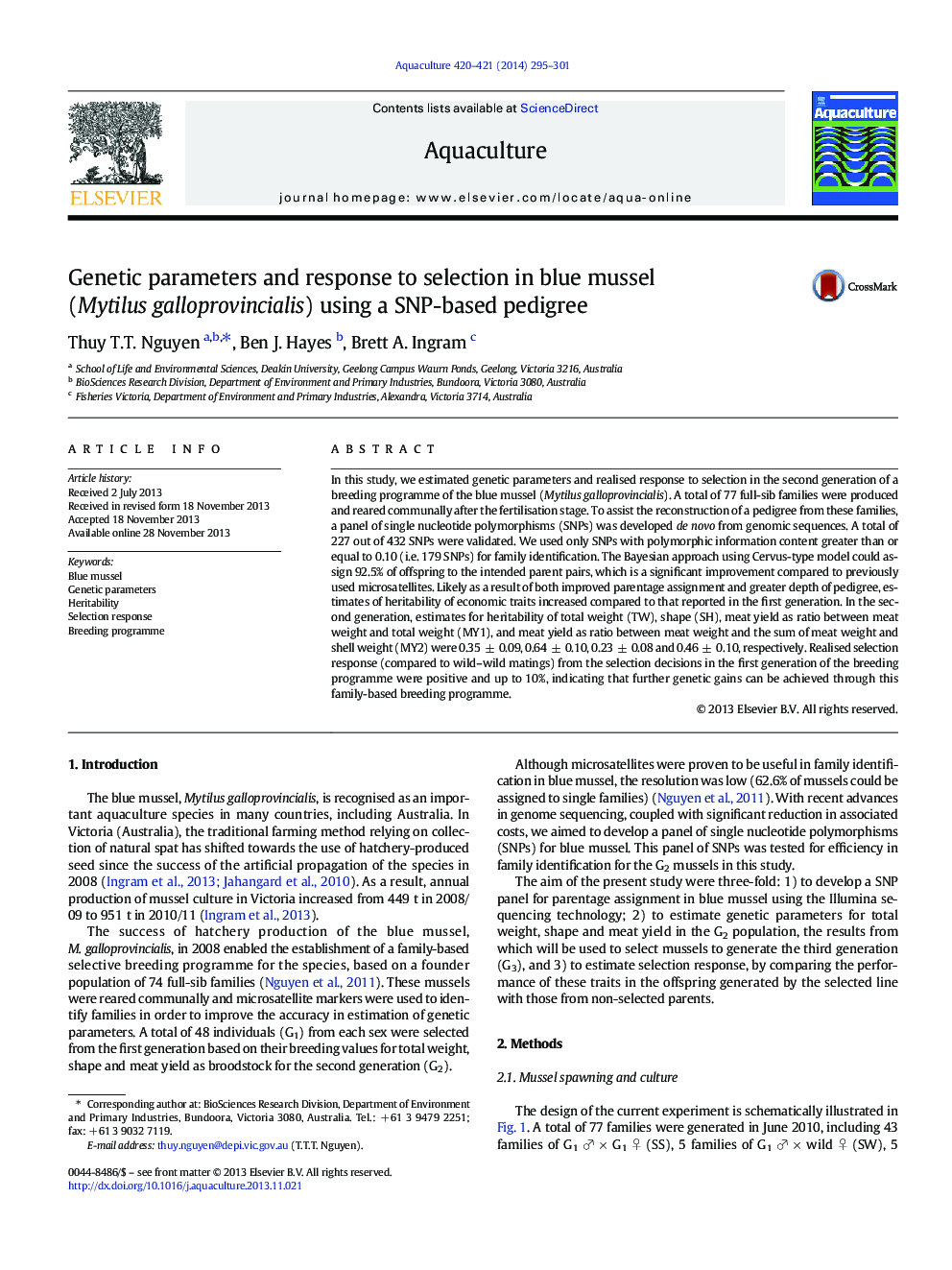| کد مقاله | کد نشریه | سال انتشار | مقاله انگلیسی | نسخه تمام متن |
|---|---|---|---|---|
| 2421983 | 1552862 | 2014 | 7 صفحه PDF | دانلود رایگان |

• We reported the first SNP panel developed de novo for the blue mussel.
• Estimates of heritabilities have increased compared to the first generation.
• Realised selection response were positive and up to 10%.
In this study, we estimated genetic parameters and realised response to selection in the second generation of a breeding programme of the blue mussel (Mytilus galloprovincialis). A total of 77 full-sib families were produced and reared communally after the fertilisation stage. To assist the reconstruction of a pedigree from these families, a panel of single nucleotide polymorphisms (SNPs) was developed de novo from genomic sequences. A total of 227 out of 432 SNPs were validated. We used only SNPs with polymorphic information content greater than or equal to 0.10 (i.e. 179 SNPs) for family identification. The Bayesian approach using Cervus-type model could assign 92.5% of offspring to the intended parent pairs, which is a significant improvement compared to previously used microsatellites. Likely as a result of both improved parentage assignment and greater depth of pedigree, estimates of heritability of economic traits increased compared to that reported in the first generation. In the second generation, estimates for heritability of total weight (TW), shape (SH), meat yield as ratio between meat weight and total weight (MY1), and meat yield as ratio between meat weight and the sum of meat weight and shell weight (MY2) were 0.35 ± 0.09, 0.64 ± 0.10, 0.23 ± 0.08 and 0.46 ± 0.10, respectively. Realised selection response (compared to wild–wild matings) from the selection decisions in the first generation of the breeding programme were positive and up to 10%, indicating that further genetic gains can be achieved through this family-based breeding programme.
Journal: Aquaculture - Volumes 420–421, 15 January 2014, Pages 295–301